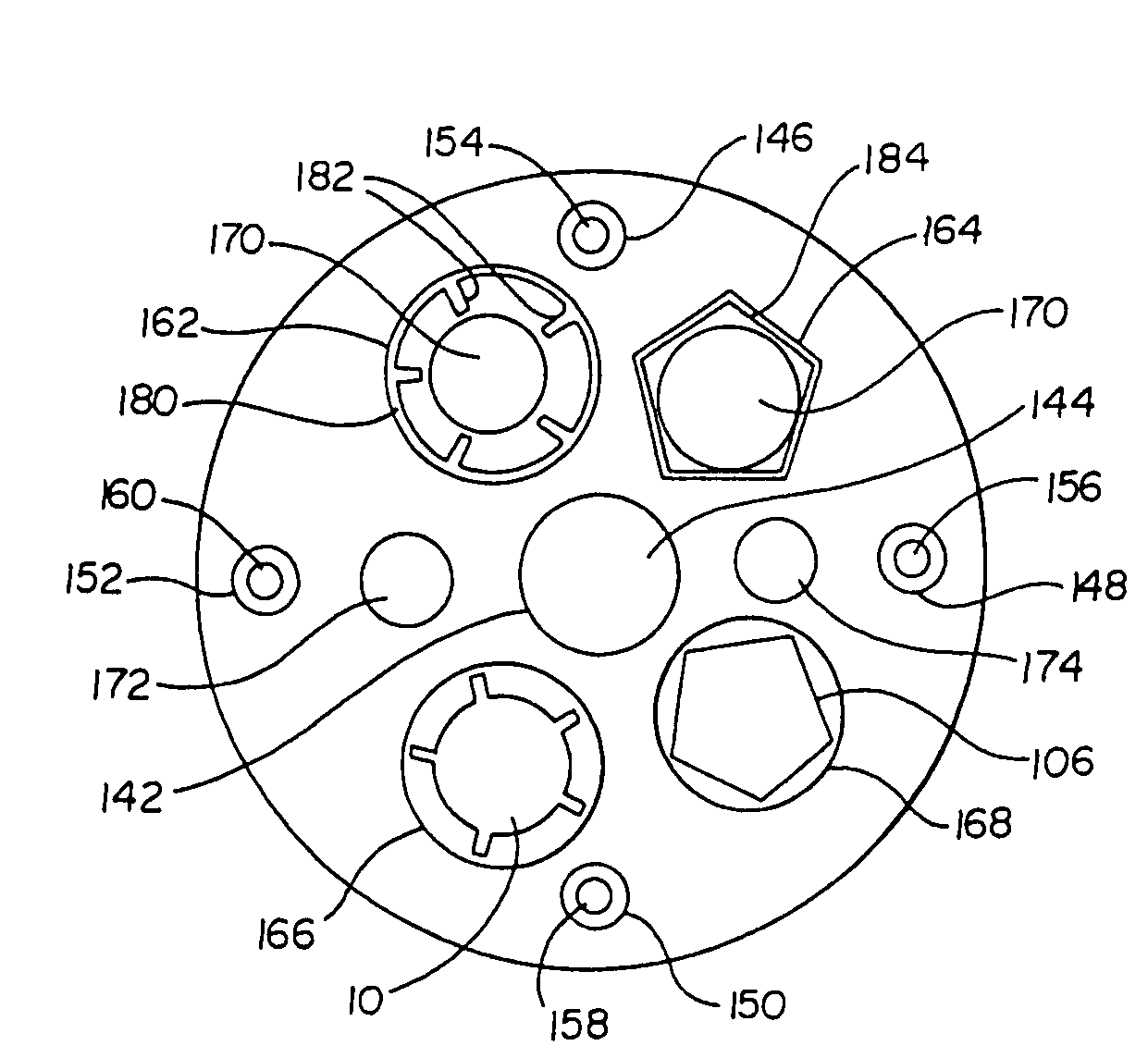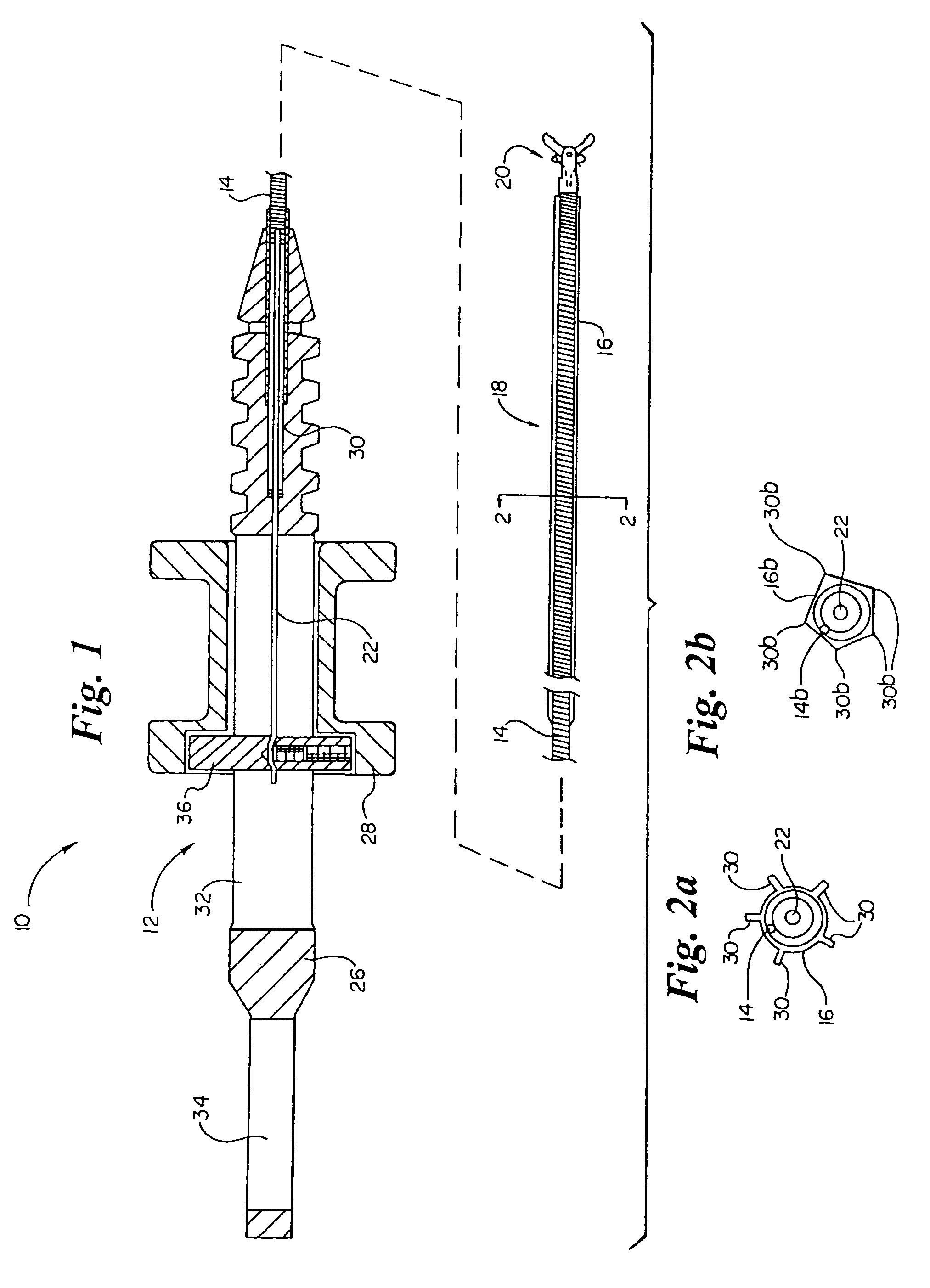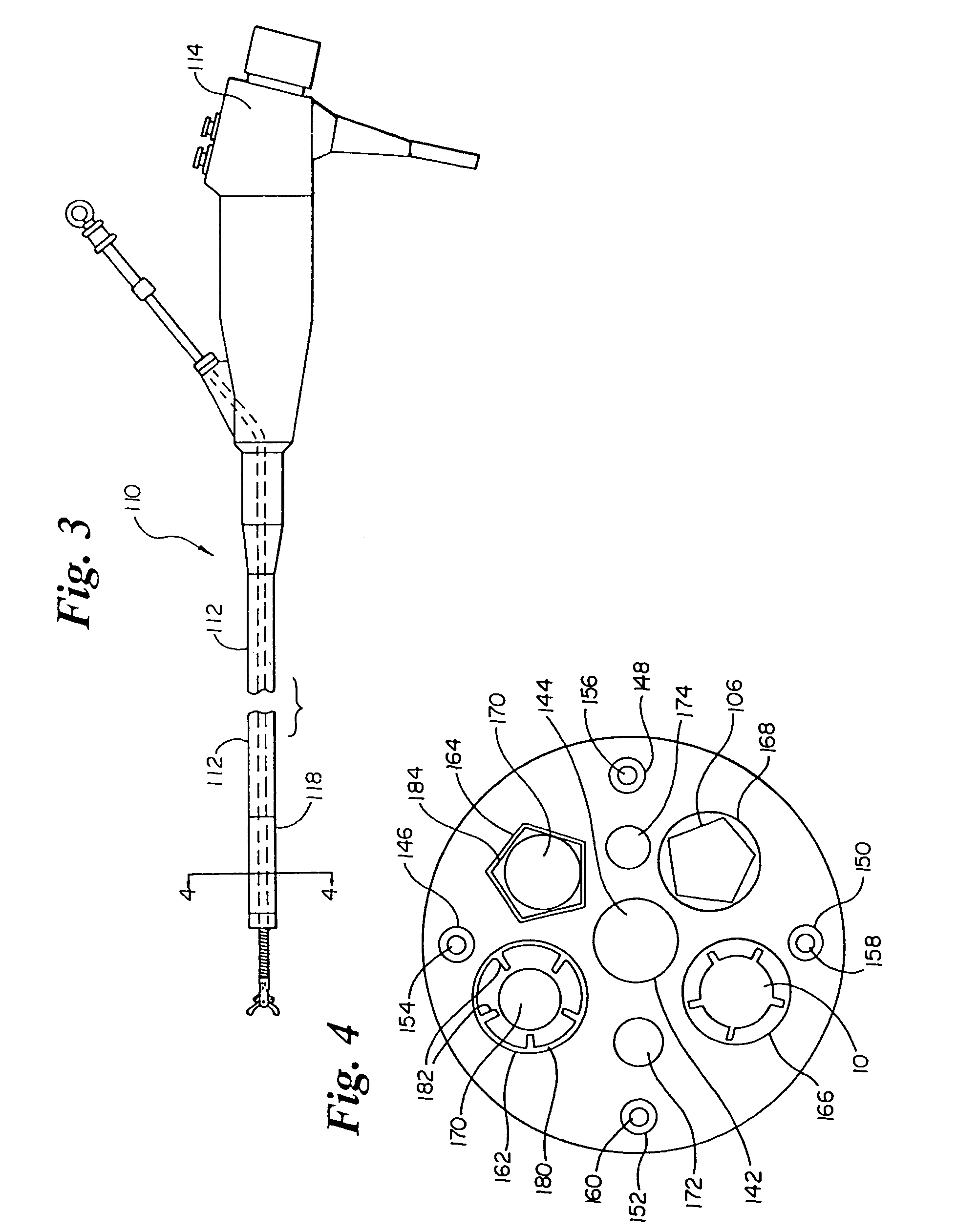Endoscope and endoscopic instrument system having reduced backlash when moving the endoscopic instrument within a working channel of the endoscope
a technology of endoscope and endoscope, which is applied in the field of surgical instruments, can solve the problems of difficult to achieve this level of accuracy, difficulty in overcoming problems such as backlash (lost motion) experienced by the doctor, and achieve the effect of little or no backlash
- Summary
- Abstract
- Description
- Claims
- Application Information
AI Technical Summary
Benefits of technology
Problems solved by technology
Method used
Image
Examples
first embodiment
[0019]Turning now to FIG. 1, an endoscopic instrument 10 for insertion through a working channel of an endoscope is shown. According to the invention, the endoscopic instrument 10 includes an actuation handle 12, a tubular coil 14, a jacket 16 provided about at least a distal portion 18 of the coil 14, an end effector assembly 20, e.g., a biopsy forceps, and a control wire 22. The actuation handle 12 typically includes a stationary member 26 and a displaceable spool 28. The stationary member 26 includes a distal throughbore 30, a central slot 32, and a proximal thumb ring 34. The displaceable spool 28 is slidably disposed on the stationary member 26 and has a cross member 36 which passes through the slot 32. The proximal end of the control wire 22 is coupled to the spool 28. Operation of the actuation handle 12 is described fully in U.S. Pat. No. 5,228,451 to Bales, which is hereby incorporated by reference herein in its entirety. In brief, longitudinal movement of the spool 28 with...
second embodiment
[0024]According to the invention, a portion of at least one of the working channels 162 is provided with a non-circular cross-sectional shape. The non-circular cross-sectional shape may be molded into the working channel or more preferably is provided by a low friction, e.g, PTFE, insert 180 preferably fixed within a distal portion 118 of the working channel 162. The insert 180 includes a plurality of radially spaced and radially inwardly directed longitudinal ribs 182. The ribs 182 can be quite small. For example, the ribs 182 may be approximately 0.1 mm thick and have a radial length of approximately 0.5 mm. Therefore, the ribs would have a minimal effect on the fluid flow cross sectional area between the working channel and the endoscopic instrument, and also provide relatively small contact points between the working channel and the endoscopic instrument.
[0025]According to an alternate second embodiment of the invention, a working channel 164 is provided with a polygonal cross-s...
PUM
 Login to View More
Login to View More Abstract
Description
Claims
Application Information
 Login to View More
Login to View More - R&D
- Intellectual Property
- Life Sciences
- Materials
- Tech Scout
- Unparalleled Data Quality
- Higher Quality Content
- 60% Fewer Hallucinations
Browse by: Latest US Patents, China's latest patents, Technical Efficacy Thesaurus, Application Domain, Technology Topic, Popular Technical Reports.
© 2025 PatSnap. All rights reserved.Legal|Privacy policy|Modern Slavery Act Transparency Statement|Sitemap|About US| Contact US: help@patsnap.com



